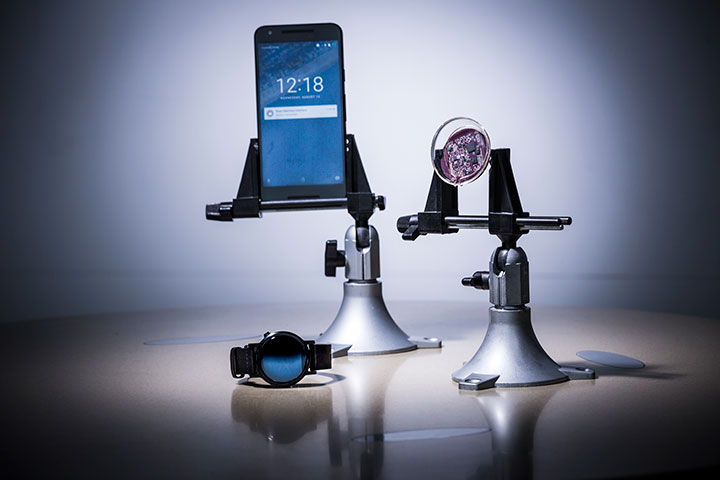Imagine a device that can communicate between an implant in your body to your cellphone or wearable tech. Or a day when your credit card is connected with your phone.

Researchers from the University of Washington have developed a new method that allows devices such as contact lenses, brain implants and credit cards to communicate with cellphones and wearable tech, converting Bluetooth signals into WiFi.
Something like a contact lens for diabetics isn’t anything new. Two years ago, Google partnered with Novartis to create such a device and other companies are attempting similar methods. And the research into brain implants to help treat those with Parkinson’s or other diseases are on the rise.
READ MORE: Google teams up with Novartis on contact lens glucose monitor
“Wireless connectivity for implanted devices can transform how we manage chronic diseases,” said Vikram Iyer, co-author of the paper to be presented at the annual conference of the Association for Computing Machinery’s Special Interest Group on Data Communication (SIGCOMM 2016).
“For example, a contact lens could monitor a diabetics blood sugar level in tears and send notifications to the phone when the blood sugar level goes down.”
However, because these smart contact lenses have certain power constraints, so far efforts to make them communicate wirelessly to cellphones have been unsuccessful, the researchers said.
In order to allow the devices to communicate, the researchers rely on something called backscatter. The implanted device doesn’t generate its own signal, but rather relies on the signal from other mobile devices — reflecting it — which uses 10,000 times less energy than other methods.
Because it converts existing Bluetooth technology into WiFi signal (using two technologies), the new process is called interscattering.
In an example, the team used a smartwatch to transmit a Bluetooth signal to a smart contact lens that included an antenna. The trick was developing a method where information can be written. In order to do that, the team developed a single “tone” where the data can encode things such as health information.
As well as being able to use this in the health care field, the researchers used the technology in credit cards, reflecting Bluetooth signals from a smartphone. The team said that one novel way this could be used is by allowing people to simply tap their cards together to split a bill at a restaurant.


Comments